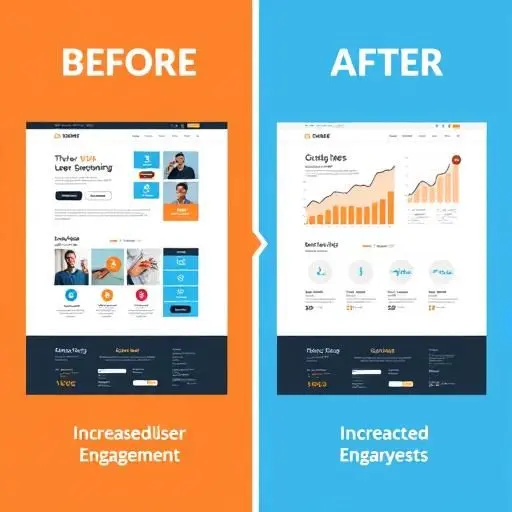In today’s competitive digital landscape, a successful UX overhaul in 30 days can effectively double your conversions and significantly enhance user experience. Founders often overlook the critical role that user experience (UX) plays in driving customer engagement and ultimately increasing revenue. By meticulously revamping their websites and applications, they can attract more visitors and convert them into loyal customers.

Identifying User Pain Points
The first step in achieving a successful ux overhaul in 30 days is to thoroughly understand your users’ pain points. This can be done through user surveys, heat maps, and usability testing. By analyzing user behavior, businesses can pinpoint areas where customers struggle and need improvement. For example, if users frequently abandon their shopping carts, the design may not be intuitive enough or have distracting elements that deter completion. Implementing an effective feedback loop can help gather valuable insights to drive necessary changes.
Key takeaway: Understanding user pain points allows for targeted improvements that can enhance user satisfaction and increase conversion rates.
Conducting Competitive Analysis
Another valuable strategy is performing competitive analysis to see what successful players in your industry are doing with their UX. By analyzing top competitors, founders can extract ideas and inspiration that resonate with users’ preferences. This can include examining website design, content organization, and overall user journeys. Implementing best practices from industry leaders can increase trustworthiness and improve user engagement on your platform.
For instance, if competitors with lower bounce rates utilize streamlined navigation menus, it may be time to rethink your website’s layout. Such insights drive impactful changes, especially when the goal is to revamp a website quickly. A tactical approach ensures that improvements align with trending design standards while fulfilling both business and user needs.
Key takeaway: Competitive analysis helps guide design strategies to align with user expectations and industry trends.
Prototyping and Testing Solutions
After identifying user pain points and conducting competitive analysis, the next phase is to create prototypes of the redesigned interface. Wireframes and mockups allow for a visual representation of the changes, making it easier for teams to collaborate and iterate. Rapid prototyping reduces the time to market and enables founders to test concepts before full implementation. Testing these prototypes with real users can provide immediate feedback on the effectiveness of the redesign. Tools like Figma or Adobe XD can facilitate this process by allowing collaboration and real-time edits.
Key takeaway: Prototyping and usability testing are essential parts of the UX revamping process that can refine design elements based on user input.
Implementing Changes Strategically

Once testing is complete and feedback has been incorporated, strategic implementation is crucial. Founders should prioritize critical updates that will yield the highest impact on conversions. This could involve redesigning the homepage, simplifying checkout processes, or enhancing mobile responsiveness. These actionable changes not only increase user satisfaction but also improve search engine visibility, leading to higher organic traffic.
Moreover, documenting these changes provides valuable insights for future iterations and helps maintain a user-focused mindset throughout the design process. Tracking metrics will be essential here as businesses can directly correlate changes made during the UX overhaul and their impacts on conversion rates.
Key takeaway: Strategic prioritization of design elements during implementation can maximize conversion rates and optimize user experience.
Regular Monitoring and Iteration
Post-implementation, regular monitoring of user behavior and engagement is critical. Utilizing tools like Google Analytics can enable founders to measure conversion rates effectively and assess user interaction patterns. Continuous optimization should be the end goal – businesses should regularly update their UX based on user feedback, emerging trends, and new technologies. An agile approach allows for ongoing testing and refinement, ensuring long-term success in achieving and maintaining high conversion rates.
For example, after implementing a UX overhaul in 30 days, if you observe an increase in engagement but some features still show low usage, consider revisiting those aspects for further enhancement. The goal is to create a fluid experience that adapts with users’ needs.
Key takeaway: Regular monitoring and iteration of the user experience ensure sustained improvements and adaptation to changing user preferences.
Conclusion
In conclusion, founders who commit to a ux overhaul in 30 days can significantly enhance their website’s effectiveness and boost conversion rates. By understanding user pain points, conducting competitive analysis, prototyping, implementing changes, and continuously monitoring results, businesses can create a fulfilling user experience that not only attracts visitors but converts them into long-term customers. The journey towards a successful UX overhaul is an ongoing effort that, when executed effectively, leads to substantial growth and success.
Ultimately, investing in user experience design reflects a commitment to quality and customer satisfaction. Teams that embrace such changes can expect to see impressive returns and a loyal customer base committed to their brand.




